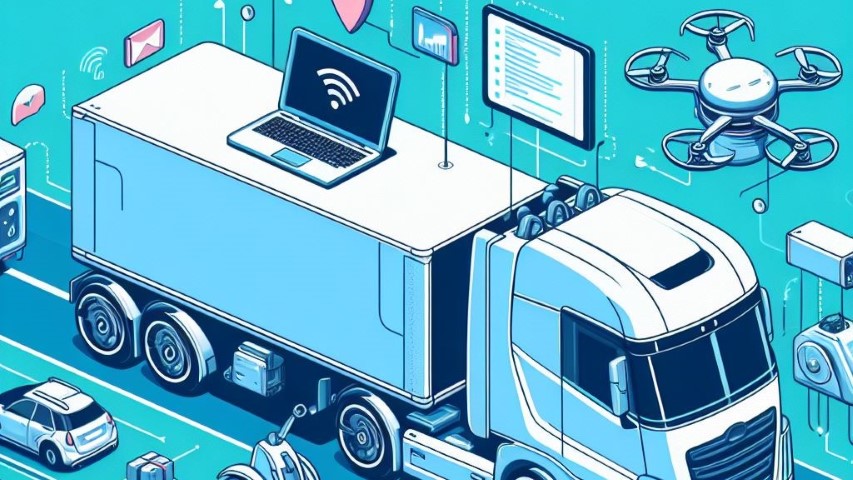While autonomous trucks are transforming the industry, true passive income directly involving them is still on the horizon. However, the rise of automation creates opportunities in related areas. Let’s explore three options you mentioned, keeping in mind the limitations of passive income and the evolving trucking landscape.
1. Getting a Truck and Renting or Leasing it Out

How it Works:
Truck Acquisition: Purchase a reliable truck that meets industry standards and leasing requirements. This requires significant upfront capital.
Finding Tenants: Screen potential drivers, verify qualifications, and establish lease agreements outlining rental rates, maintenance responsibilities, and insurance requirements.
Truck Maintenance: Schedule regular maintenance and repairs to ensure the truck remains in good condition. You might be responsible for these costs depending on the lease agreement.
Managing Rental Income: Collect lease payments from tenants according to the agreed-upon terms.
Potential Benefits:
Recurring Income: Leasing your truck to qualified drivers can generate regular income.
Flexibility: You have control over lease terms and can choose the level of involvement in managing the truck.
Challenges and Considerations:
Active Management: Finding reliable tenants, managing maintenance, and handling potential damage requires active effort.
Upfront Investment: Purchasing a truck requires significant capital.
Market Dependence: Rental income depends on market conditions and driver demand.
Autonomous Future: As autonomous trucks become more prominent, the demand for leased traditional trucks might decrease.
Passive Income Potential: Limited. While leasing offers recurring income, ongoing management is required.
2. Investing in a FedEx Delivery Route

How it Works:
Route Purchase: Research available FedEx routes for sale that align with your budget and location. Negotiate a purchase price with the current owner.
Approval Process: Meet FedEx’s qualifications and complete their training program to become a route owner.
Route Management: Hire qualified drivers, ensure adherence to delivery schedules and customer service standards, and manage logistics for your route.
Performance Monitoring: Maintain on-time delivery rates and customer satisfaction metrics set by FedEx.
Potential Benefits:
Established System: FedEx offers established routes with existing customer bases, potentially leading to steady income.
Training and Support: FedEx may provide training and support for new route owners.
Growth Potential: Successful route management might allow for route expansion or acquisition.
Challenges and Considerations:
Investment Required: Purchasing a FedEx delivery route can be expensive.
Management Responsibilities: You’ll likely need to hire drivers, manage logistics, and ensure adherence to FedEx standards.
Performance Requirements: Maintaining on-time delivery and customer satisfaction metrics is crucial.
Passive Income Potential: Limited. Managing routes and drivers requires active involvement.
3. Buying a Bread Route

How it Works:
Route Acquisition: Find a bread route for sale in your area, considering factors like customer base and delivery schedule. Negotiate a purchase price.
Inventory Management: Establish relationships with bakeries to secure fresh bread supplies and manage inventory according to customer needs.
Delivery Logistics: Develop efficient delivery routes, hire reliable drivers (or handle deliveries yourself), and maintain a delivery schedule that meets customer expectations.
Customer Relations: Build rapport with customers to retain their business and potentially grow your route.
Potential Benefits:
Recurring Revenue: Bread routes offer consistent income from established customer bases.
Relatively Lower Investment: Compared to trucks or FedEx routes, bread routes might require a smaller initial investment.
Potentially Scalable: Successful route management could allow for route expansion in some cases.
Challenges and Considerations:
Availability: Bread routes may not be readily available for purchase in all areas.
Early Hours and Physical Demands: Delivery schedules often involve early mornings and physical activity.
Customer Retention: Maintaining good relationships with customers is crucial for sustained income.
Passive Income Potential: Limited. Managing inventory, deliveries, and customer relationships requires ongoing work.
Final Thoughts
While these options offer income streams associated with the trucking industry, they are not truly passive. They all involve varying degrees of active management and require ongoing effort.
You can also check How to make passive income while in the military.
For a more passive approach, consider exploring established passive income methods like:
- Investing in the Stock Market: Research and invest in established trucking companies or companies developing self-driving technology (higher risk).
- Affiliate Marketing: Promote trucking-related products or services and earn commissions on sales.
- Real Estate Investment Trusts (REITs): Invest in REITs focused on logistics or warehousing to benefit from the industry’s growth.
Remember, thorough research and careful planning are crucial before pursuing any investment or business venture.
Read more:





Pingback: how to make passive income as a teenager - ClickHustle.net